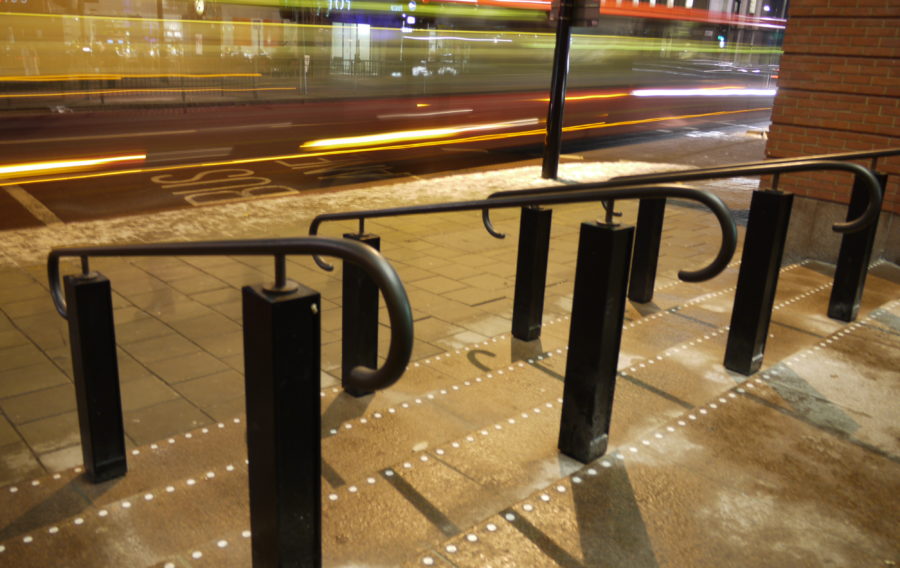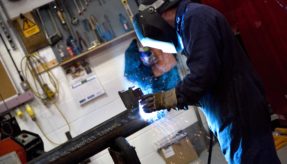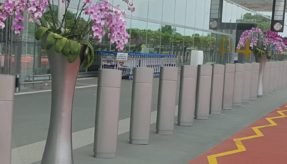
Gavin Hepburn, Director at ATG Access, examines the challenges of combining design aesthetics with protecting cities from vehicle-related terrorism.
Over the past 12 months, vehicle-related terrorism has become a constant threat. As a result, cities around the world have been forced to consider the extent of their security measures. It’s no longer enough to be reactionary; a permanent solution is required for daily protection.
This, of course, poses various issues for defence professionals. In addition to the associated costs surrounding the purchase of products, and the coinciding installation and maintenance fees, there is also an aesthetic consideration. For cities that attract tourists based on their architecture, the addition of an unsightly security solution is an unwelcome prospect.
Take the German city of Muenster, for example. A popular tourist destination renowned for its medieval old town, with over 600,000 visitors per year, it became the latest continental city to fall victim to a vehicle attack. With two fatalities and 20 injuries, there was no question as to whether extra security was needed; rather, the question was how could it be seamlessly applied to the existing surroundings.
Bespoke safety solutions
In addition to security products undergoing vigorous testing to ensure they can withstand an appropriate amount of force, design aesthetics have become just as important a consideration for manufacturers of bollards, barriers and road blockers.
This has also become a key consideration for architects, specifiers and procurement managers who now need to include security measures in their plans.
Gone are the days of grey, concrete structures, designed without much thought to their appearance. City and town councils can now order bespoke solutions, tailored exactly to their specifications. Colourways can be specified, artwork can be added and the streamlined design is a world away from the imposing structures of old.
One such product, impact testing bollards, poses a strong example of a solution that can be tailored to fully integrate into its surroundings. For example, in Singapore’s Marina Bay, bollards have been added to plant pots to make an attractive design feature that enhances the area rather than compromising its natural beauty.
Should public participation be encouraged?
Following last year’s vehicle attack in Melbourne, which resulted in the installation of 200 concrete pillars in 11 pedestrian areas across the city, local residents took matters into their own hands, decorating them with handmade covers, while graffiti artists responded by tagging pillars with political slogans.
Such events prove that if government doesn’t make the matter of aesthetics part of its own remit, the public will. This spurred Winchester Council to actively encourage community participation through its bollard painting project in partnership with Hampshire County Council.
In a similar project last year, anti-terror bollards in Hull were given a festive makeover for the Christmas period, with decorations and wrapping paper transforming otherwise dull structures into a visual attraction.
But while this type of public interaction works for some areas, others, with more historical surroundings, may require an alternative solution. At the Renaissance Hotel in London, for example, shallow mounted bollards have been covered in bespoke burgundy sleeves. The result allows the modern security measures to fit in with the traditional look of the Grade I listed building, while keeping it secure.
Making security the norm
Ultimately, the rise in vehicle-related terrorism means that preventative security measures must become a permanent feature of towns and cities’ core architecture. And due to this unavoidable fact, paired with the importance of people feeling safe and calm in their surroundings, authorities and defence professionals must make a decision as to the best solution for the specific area.
Should public participation be encouraged to help lessen the illusion of threat caused by security measures? Or should a more bespoke option be created to blend in with, rather than detract from, listed or historical structures? Regardless of the brief, the manufacturers of security solutions are more flexible than ever before, able to completely adapt their products to our changing world and its developing threats. Because there is so much more to security than simply strength – strong design aesthetics are integral to the public’s well-being. And what is a place without its people?
For more information, visit: www.atgaccess.com
If you would like to join our community and read more articles like this then please click here.







